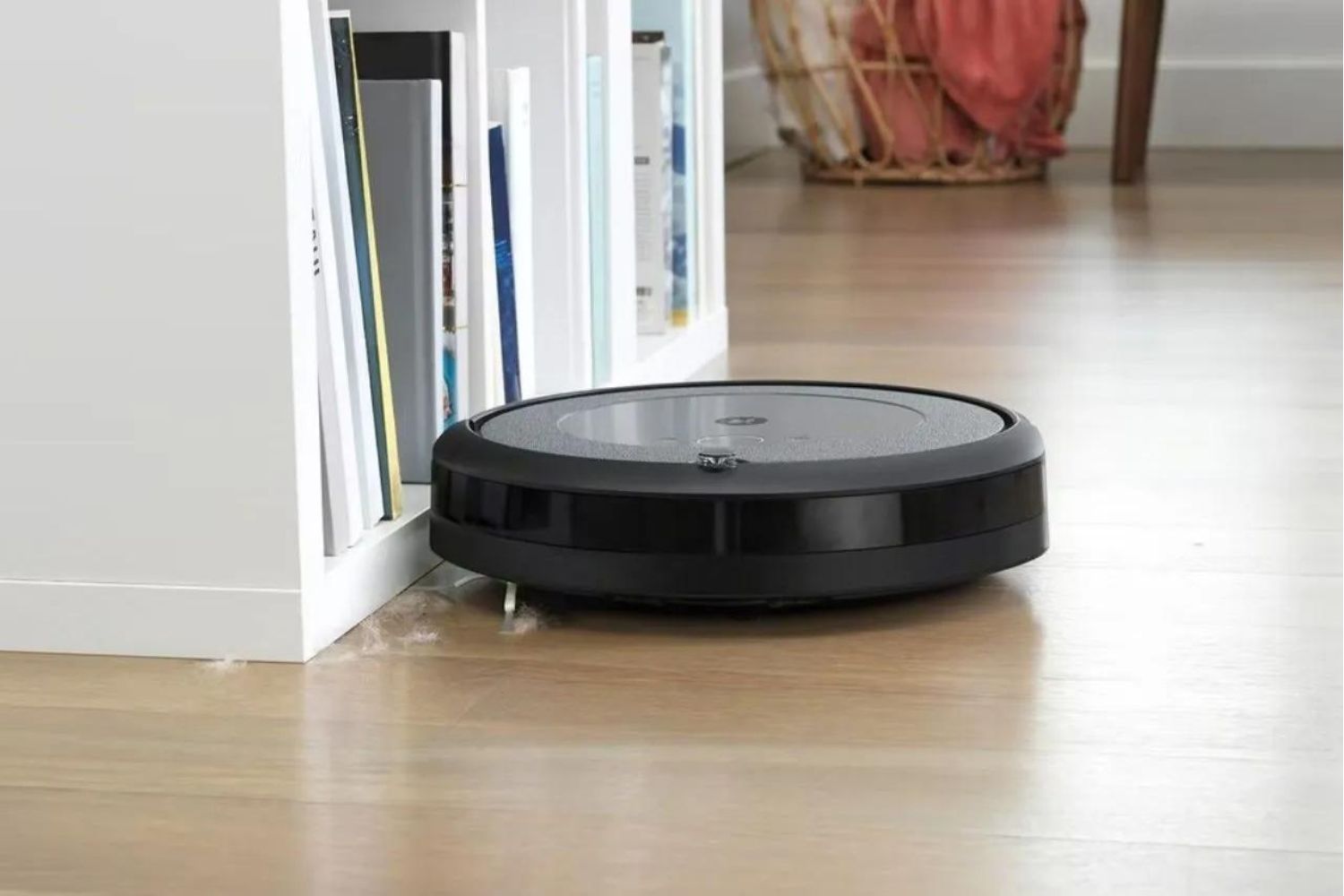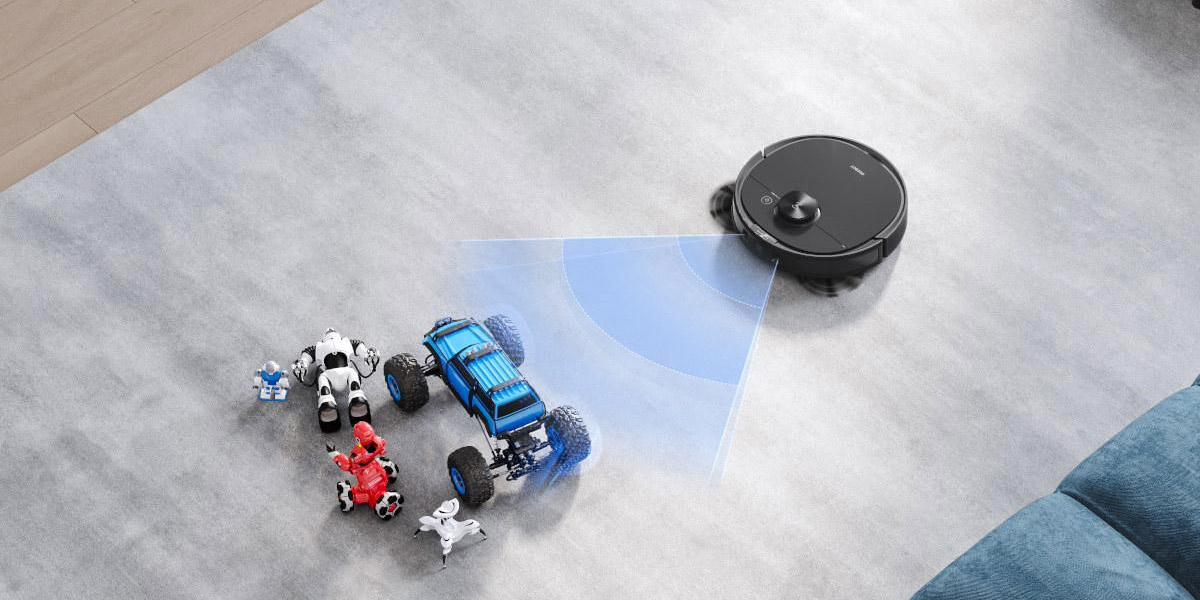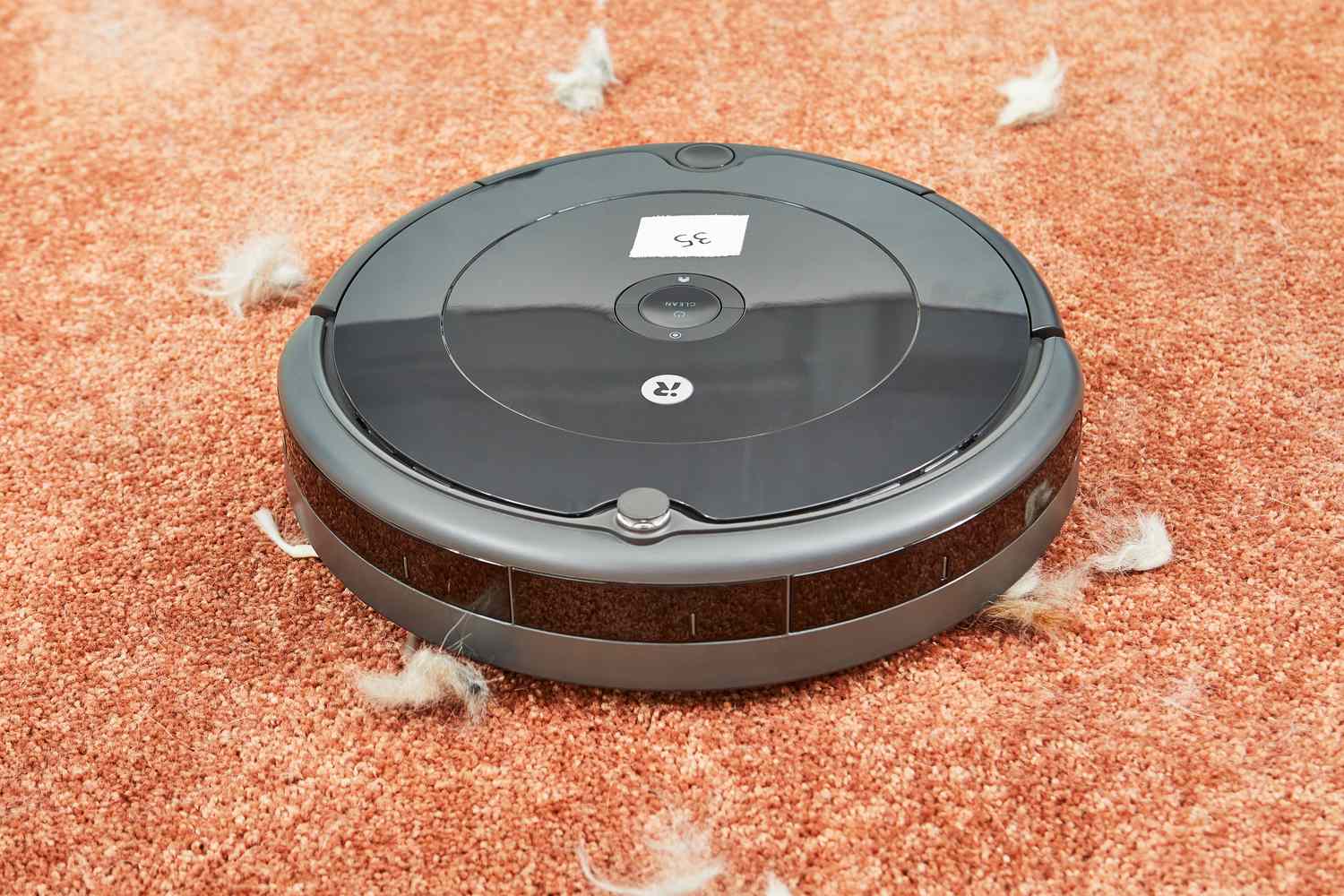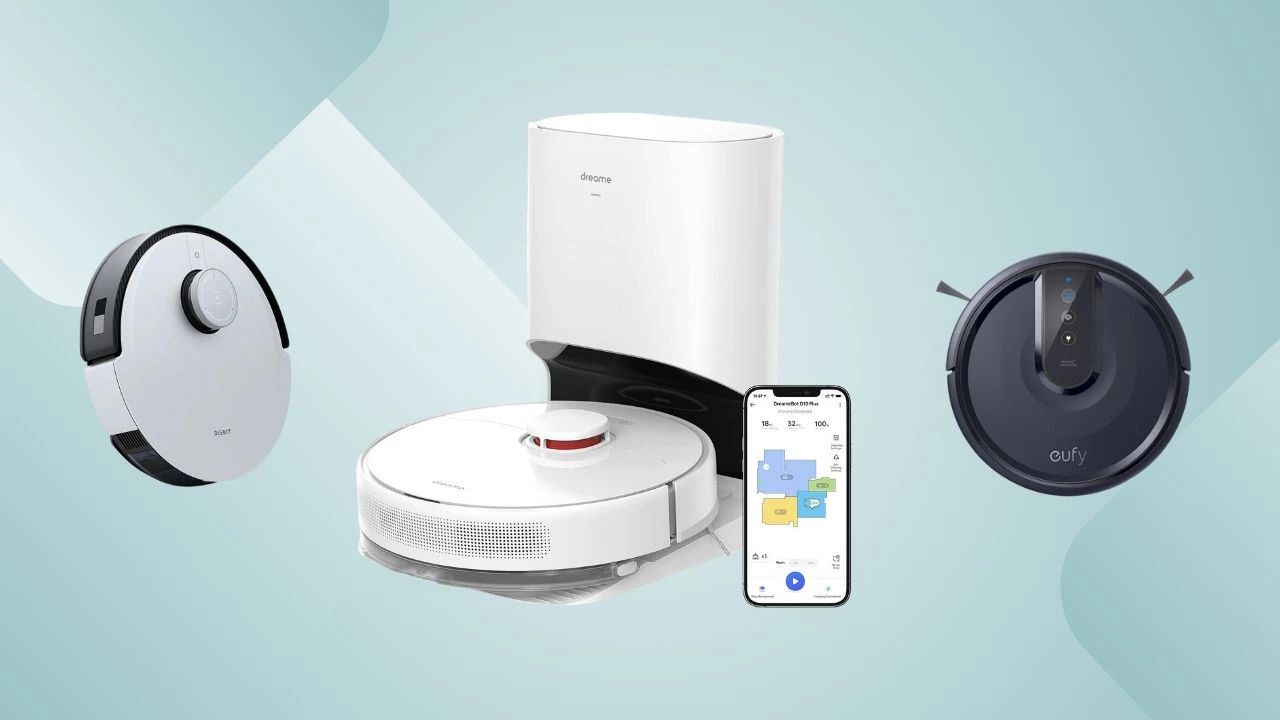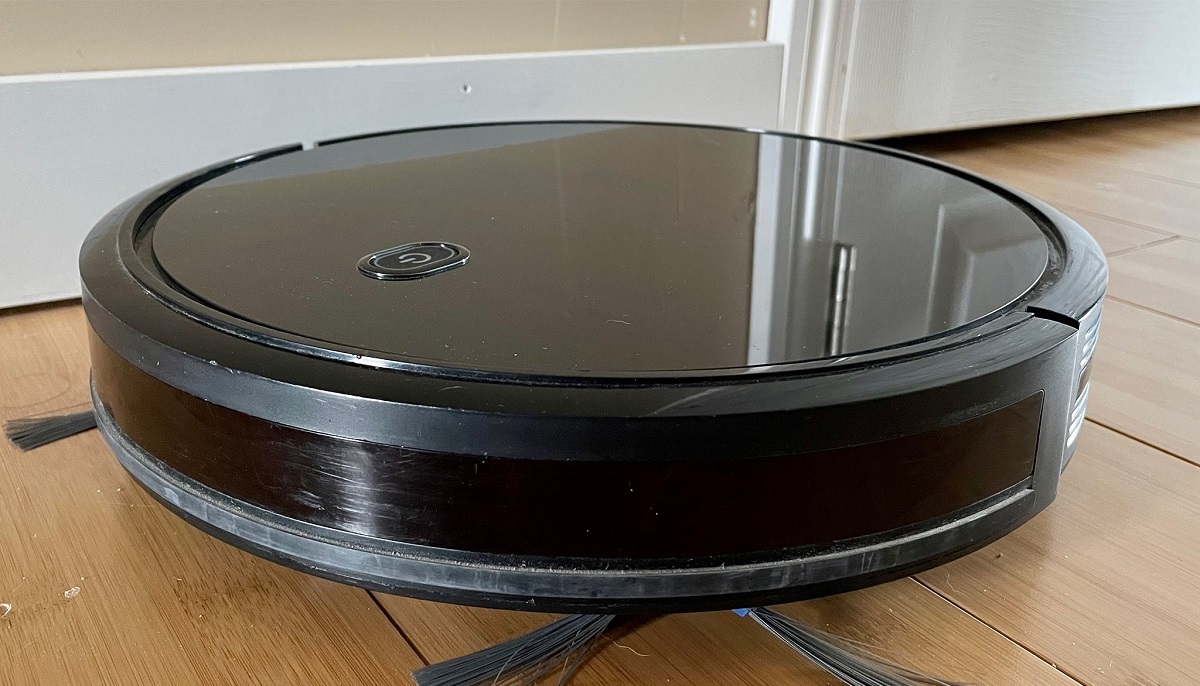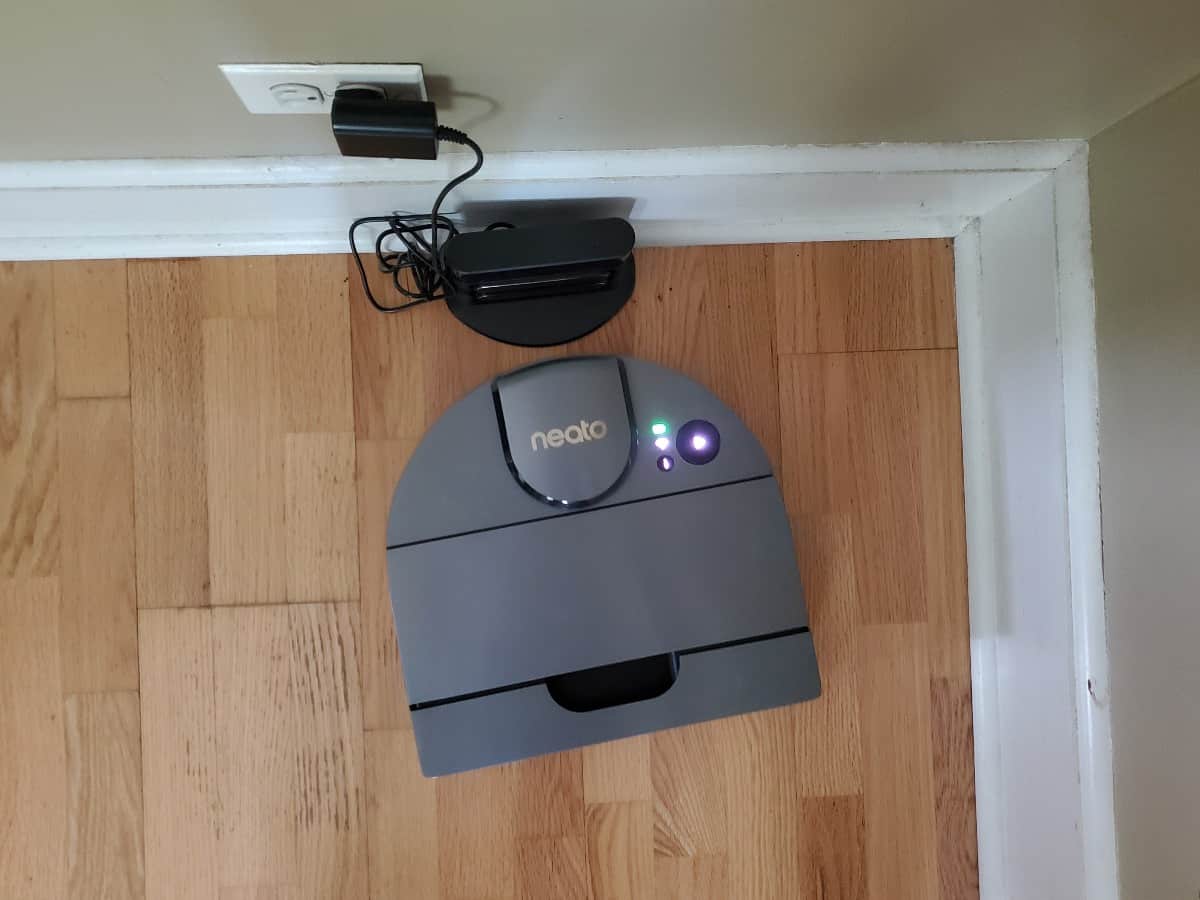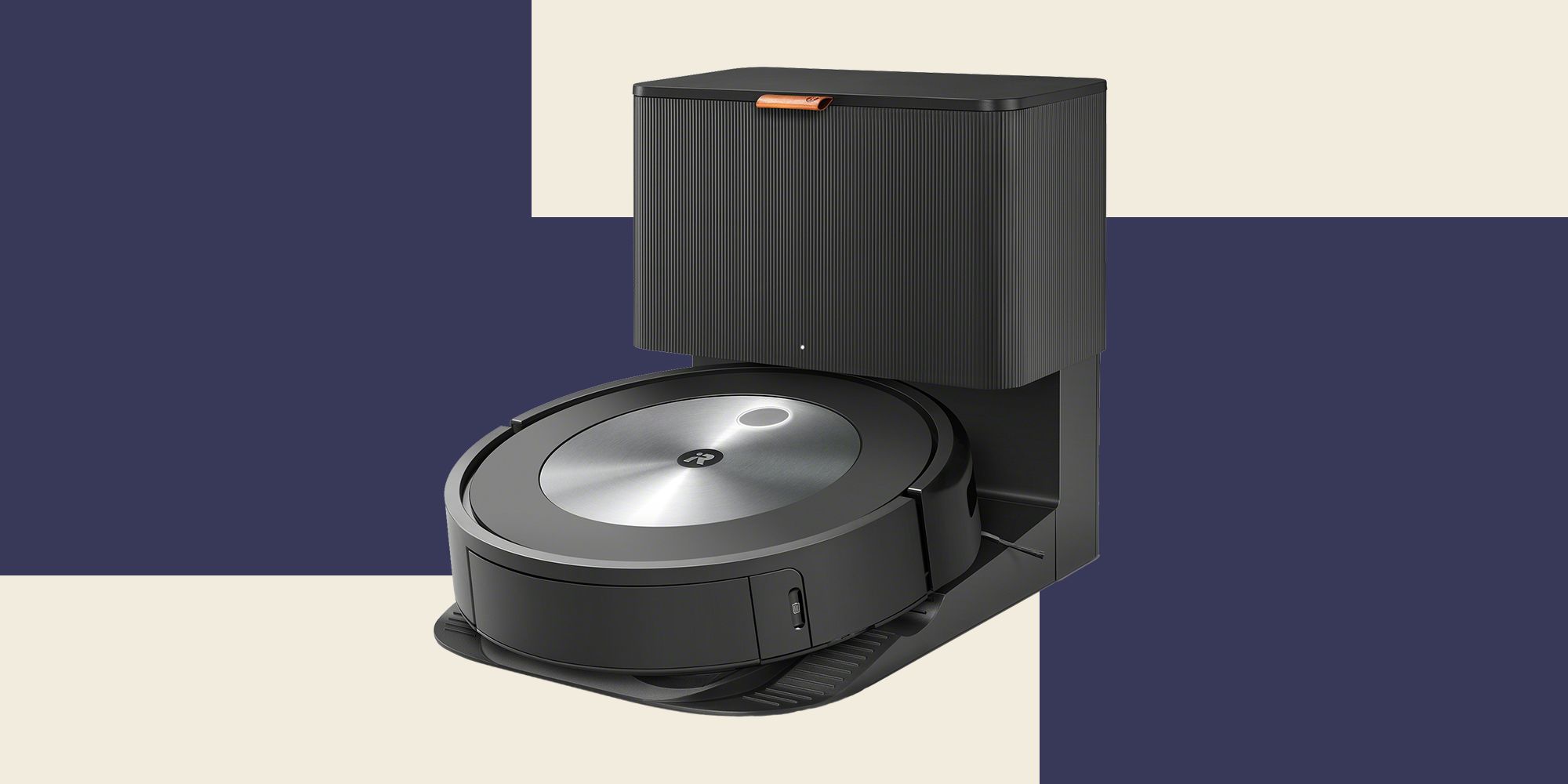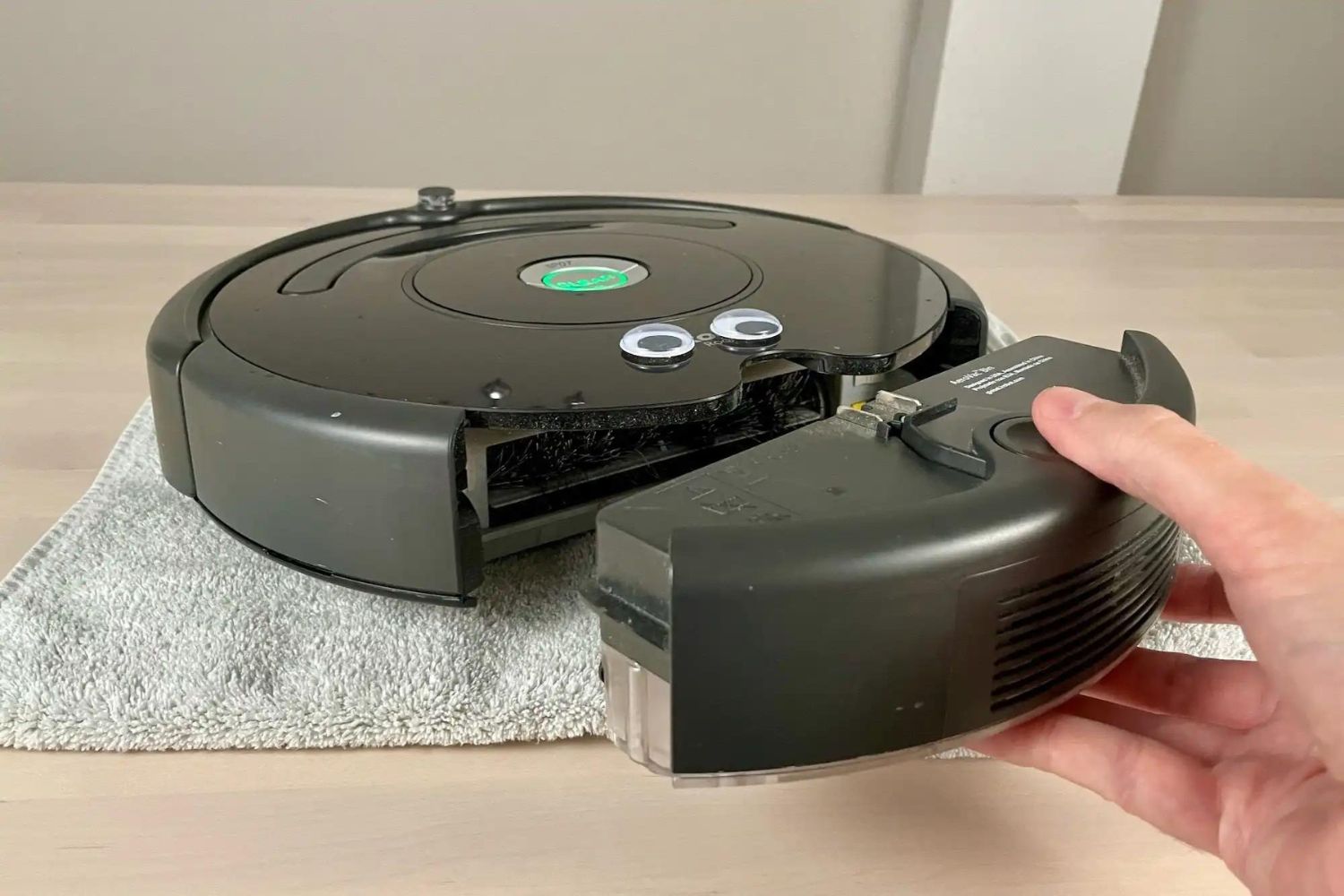Introduction
Welcome to the world of robot vacuums, where cleaning your floors has become as easy as pressing a button. These innovative devices are designed to autonomously navigate your home and sweep away dirt and debris. However, you may have noticed that your robot vacuum sometimes seems to have a mind of its own, repeatedly going in circles instead of following a straight path.
When this happens, it can be frustrating and leave you wondering why your robot vacuum keeps going in circles. Don’t worry, though – you’re not alone. Many users face this issue, and there are several potential causes behind it.
In this article, we’ll delve into the technology behind robot vacuums, explore the possible reasons why your device may be going in circles, and discuss troubleshooting tips to help you resolve the issue.
But first, let’s gain a better understanding of how robot vacuums work and the technology that drives them.
Understanding the Technology Behind Robot Vacuums
Robot vacuums are equipped with advanced technologies that enable them to clean your floors efficiently and autonomously. These devices are equipped with a range of sensors, motors, and algorithms that work together to navigate your home and remove dirt and debris.
One key component of a robot vacuum is its collision sensor. This sensor detects obstacles, such as furniture or walls, and allows the vacuum to navigate around them. Additionally, robot vacuums are equipped with cliff sensors that prevent them from falling down stairs or ledges.
In order to determine the most efficient cleaning path, robot vacuums utilize various algorithms. These algorithms instruct the vacuum to move in different patterns, such as a spiral or zigzag, to ensure thorough coverage of the floor space. The vacuum continuously assesses its surroundings and adjusts its cleaning path accordingly.
The cleaning power of a robot vacuum comes from its motor and brush mechanism. The motor generates suction power to effectively pick up dirt and debris, while the brush mechanism, which can be a combination of bristle and rubber brushes, agitates and lifts dirt from different types of surfaces.
Furthermore, modern robot vacuums often come equipped with smart features such as Wi-Fi connectivity and mapping capabilities. These features enable the vacuum to be controlled and monitored remotely through a smartphone app, as well as create virtual maps of your home for more efficient cleaning.
Now that we have a basic understanding of the technology behind robot vacuums, let’s explore some potential causes behind the circle path issue.
Potential Causes for the Circle Path
If your robot vacuum keeps going in circles instead of following a straight path, there are several potential causes that could be triggering this behavior. Understanding these causes can help you troubleshoot and resolve the issue.
One possible cause is a sensor malfunction. Robot vacuums rely on sensors to detect obstacles and navigate around them. If one or more of these sensors are not functioning properly, the vacuum may have difficulty accurately perceiving its surroundings. This can lead to the circular motion as it continuously tries to detect and avoid imaginary obstacles.
Another potential cause is a malfunctioning wheel. If one of the wheels on your robot vacuum is not spinning or is stuck, it can cause the device to rotate in circles instead of moving in a straight line. Inspect the wheels carefully to ensure that they are clean, free from debris, and able to rotate smoothly.
In some cases, the cleaning pattern optimization may be to blame. Robot vacuums employ algorithms to determine the most efficient cleaning path. However, if the algorithm is not accurately calculating the optimal path, it can result in repeated circling behavior. This issue can sometimes be resolved through software updates provided by the vacuum’s manufacturer.
Battery or power issues can also contribute to the circular motion problem. If the vacuum’s battery is low or not properly charging, it may experience insufficient power to navigate and clean effectively. Check the battery level and charging connections to ensure they are functioning properly.
It’s worth noting that certain floor surfaces, such as high-pile carpets or rugs with fringe, can also disrupt the movement of robot vacuums and cause them to veer off course. In these cases, it may be necessary to adjust the vacuum’s settings or manually move it to avoid getting stuck in a continuous circular path.
Now that we’ve explored some potential causes behind the circle path issue, it’s time to delve deeper into specific malfunctions and troubleshooting tips to help resolve the problem.
Sensor Malfunction
A sensor malfunction is one of the common reasons why a robot vacuum may keep going in circles. These devices are equipped with multiple sensors that enable them to navigate around obstacles and efficiently clean your floors. If any of these sensors are not functioning properly, it can disrupt the vacuum’s ability to perceive its surroundings accurately.
To diagnose a sensor malfunction, start by checking if there is any debris or dirt obstructing the sensors. Clean the sensors carefully using a soft, dry cloth to ensure they are free from any blockages that might be affecting their performance. If the issue persists, you may need to consult the user manual or contact the manufacturer for further troubleshooting steps.
In some cases, a simple reset can resolve sensor malfunctions. Turn off the vacuum, unplug it from the power source, and wait for a few minutes before plugging it back in and turning it on again. This can often reset the sensor system and restore its functionality.
If the sensor malfunction persists, it may be necessary to replace the faulty sensor. Contact the manufacturer or authorized service center to inquire about sensor replacement options or to schedule a repair.
Regular maintenance and cleaning of the sensors can help prevent future malfunctions. Ensure that the robot vacuum is kept in a clean environment, and regularly remove any dirt or dust that might accumulate on the sensors. Additionally, it is essential to follow the manufacturer’s guidelines for sensor care and maintenance to prolong their lifespan.
Keep in mind that sensor malfunctions can also sometimes be software-related. Manufacturers often release firmware or software updates to address issues and improve the performance of their robot vacuums. Check the manufacturer’s website or the vacuum’s app for any available updates and install them according to the provided instructions.
By addressing sensor malfunctions promptly and ensuring proper maintenance, you can resolve issues with your robot vacuum’s circular motion and restore its ability to navigate and clean your floors effectively.
Wheel Malfunction
A wheel malfunction is another potential cause for a robot vacuum’s continuous circling behavior. The wheels play a critical role in the vacuum’s movement, allowing it to navigate your home and follow the intended cleaning path. If one or more of the wheels are not functioning properly, it can disrupt the vacuum’s ability to move in a straight line and result in a circular motion.
To check for a wheel malfunction, carefully inspect all the wheels on your robot vacuum. Ensure that they are clean and free from any debris or tangled hair that might be hindering their movement. Using a soft cloth or a small brush, remove any obstructions that could be preventing the wheels from rotating smoothly.
If the wheels appear to be clean and clear of any debris, test their functionality by manually spinning them. They should rotate freely without resistance. If any of the wheels feel loose, are not spinning, or show signs of damage, a wheel malfunction is likely the cause of the circular movement.
In the case of a wheel malfunction, contact the manufacturer or authorized service center to inquire about wheel replacement options or to arrange a repair. They will be able to provide you with the necessary guidance and support to resolve the issue.
Preventing future wheel malfunctions involves regular maintenance and cleaning. Make it a habit to check and clean the wheels of your robot vacuum on a routine basis, especially if you have pets or if the vacuum frequently encounters large amounts of debris. This will minimize the accumulation of dirt and hair that can cause the wheels to malfunction.
It’s also worth noting that some robot vacuums with multiple wheels may have specific settings or configurations that can help optimize their movement and prevent wheel-related issues. Consult the user manual or the manufacturer’s website to ensure that your vacuum is correctly set up to avoid any potential wheel malfunctions.
By addressing wheel malfunctions promptly and maintaining the wheels properly, you can restore your robot vacuum’s functionality and ensure it moves smoothly along the intended cleaning path.
Cleaning Pattern Optimization
Cleaning pattern optimization is an essential aspect of a robot vacuum’s functionality. These devices utilize sophisticated algorithms to determine the most efficient cleaning path and ensure thorough coverage of your floors. However, if there is an issue with the algorithm or calibration, it can lead to repetitive circling behavior instead of following a straight path.
If you notice that your robot vacuum is continuously going in circles, you can try optimizing its cleaning pattern by following these steps:
1. Check for firmware updates: Manufacturers often release updates to improve the performance and cleaning patterns of their robot vacuums. Check the manufacturer’s website or the vacuum’s app for any available firmware updates. Install them according to the provided instructions to enhance the vacuum’s cleaning algorithm.
2. Reset the vacuum’s mapping: Some robot vacuums create virtual maps of your home to navigate more efficiently. If the mapping data has become corrupted or inaccurate, it can impact the cleaning pattern. Resetting the mapping and allowing the vacuum to remap your home can help resolve this issue. Refer to the user manual for instructions on how to reset the mapping function of your specific vacuum model.
3. Adjust the cleaning settings: Most robot vacuums offer different cleaning modes, such as spot cleaning or edge cleaning. Experiment with these settings to see if changing the cleaning mode or intensity affects the vacuum’s moving patterns. The optimal setting might vary depending on the layout and condition of your floors.
4. Clear obstacles: Make sure there are no objects, loose wires, or cords obstructing the vacuum’s path. Even small obstacles can disrupt the cleaning pattern and cause the vacuum to go in circles. Clear the area of any potential obstructions before starting the cleaning cycle.
5. Monitor the cleaning process: During a cleaning cycle, observe the movements of the vacuum to identify any patterns or issues. Note if the vacuum gets stuck in certain areas or if it continually circles around specific objects. This information can help you troubleshoot the problem and find a potential solution.
If the cleaning pattern optimization attempts do not resolve the issue, it’s recommended to consult the manufacturer’s customer support or contact an authorized service center. They can provide further guidance or arrange a repair if necessary.
Remember that each robot vacuum model may have specific features and settings related to cleaning pattern optimization, so always refer to the user manual and manufacturer’s guidelines for the most accurate troubleshooting steps.
Battery or Power Issues
Battery or power issues can also be a common cause for a robot vacuum’s circular motion problem. If the vacuum’s battery level is low or not charging properly, it may lack sufficient power to navigate and clean effectively, resulting in continuous circling instead of following a straight path.
To troubleshoot battery or power issues, follow these steps:
1. Check the battery level: Most robot vacuums have battery indicators to show the remaining power. Check the battery level on the vacuum itself or through the smartphone app if available. If the battery level is low, recharge the vacuum according to the manufacturer’s instructions to ensure it has enough power for optimal performance.
2. Inspect the charging connections: Verify that the vacuum is properly connected to the charging dock or station. Ensure that the charging contacts on both the vacuum and the dock are clean and free from dust or debris. A poor connection or dirty contacts can result in insufficient charging and low power levels.
3. Reset the vacuum: Sometimes a simple reset can resolve minor power-related issues. Turn off the vacuum, unplug it from the power source, and wait for a few minutes. Then plug it back in and turn it on again. This can help refresh the vacuum’s electrical system and potentially resolve any charging or power-related problems.
4. Examine the power adapter: Inspect the power adapter and cable for any signs of damage or wear. A faulty adapter or cable can hinder the charging process and lead to inadequate power supply. If you notice any issues, contact the manufacturer for a replacement.
If the above steps do not resolve the battery or power issues, consult the user manual or contact the manufacturer’s customer support for further assistance. They may be able to provide additional troubleshooting steps or arrange for a repair or replacement if needed.
Moreover, consider following best practices for battery maintenance. Allow the vacuum’s battery to fully discharge and recharge periodically to optimize its performance and lifespan. Avoid exposing the vacuum to extreme temperatures, as it can affect battery health and performance.
By addressing battery or power issues promptly and properly maintaining the vacuum’s battery, you can ensure that it has the necessary power to navigate your home and clean efficiently without getting stuck in a continuous circular path.
Troubleshooting Tips
When your robot vacuum keeps going in circles, there are several troubleshooting steps you can take to identify and resolve the issue. These tips can help pinpoint the underlying problem and get your vacuum back on track:
1. Clean the sensors: Dirt or debris on the sensors can interfere with the vacuum’s navigation, causing it to circle instead of following a straight path. Carefully clean the sensors using a soft cloth or brush to ensure they are free from any obstructions.
2. Inspect the wheels: Check the wheels for any debris or tangled hair that might be hindering their rotation. Clean them thoroughly to ensure they can move freely without any obstructions.
3. Adjust the cleaning settings: Experiment with different cleaning modes or intensity settings to determine if it affects the vacuum’s movement. Sometimes, a different setting can resolve the circular motion issue.
4. Clear the area of potential obstacles: Remove any objects, loose wires, or cords that can obstruct the vacuum’s path. Even small obstacles can disrupt its movement and cause it to go in circles.
5. Reset the vacuum: Try turning off the vacuum, unplugging it from the power source, and waiting for a few minutes before plugging it back in and turning it on again. This can help reset any minor glitches in the vacuum’s system.
6. Update the firmware: Check for any available firmware or software updates for your robot vacuum. Manufacturers often release updates to improve performance and address known issues that may cause circular motion problems.
7. Consult the user manual: Refer to the user manual for specific troubleshooting steps related to your vacuum model. The manual may provide additional guidance or suggestions tailored to your device.
8. Contact customer support: If all else fails, reach out to the manufacturer’s customer support for further assistance. They can provide personalized troubleshooting advice or arrange for a repair or replacement if necessary.
Remember, different robot vacuum models may have unique features and troubleshooting steps. Always refer to the manufacturer’s guidelines and follow the specific instructions provided for your vacuum to ensure the best possible outcome.
By following these troubleshooting tips, you can effectively identify and resolve the circular motion issue, allowing your robot vacuum to clean your floors efficiently and effectively.
Conclusion
Dealing with a robot vacuum that keeps going in circles can be frustrating, but understanding the underlying causes and implementing troubleshooting steps can help resolve the issue. We explored various potential factors contributing to this problem, such as sensor malfunction, wheel issues, cleaning pattern optimization, and battery or power-related issues.
Sensor malfunctions can disrupt the vacuum’s ability to accurately perceive its surroundings. Cleaning the sensors and ensuring proper maintenance can help resolve this issue. Wheel malfunctions can also lead to circular motion, and cleaning or replacing the wheels may be necessary. Optimizing the cleaning pattern through firmware updates, adjusting settings, and clearing obstacles can alleviate continuous circling behavior. Battery or power-related issues, including low battery levels or faulty connections, can also be addressed through proper troubleshooting and maintenance.
Remember to consult the user manual and reach out to the manufacturer’s customer support for specific guidance related to your robot vacuum model. Additionally, regular maintenance, cleaning, and following best practices for battery care can help prevent future issues and ensure optimal performance.
By understanding the technology behind robot vacuums and employing troubleshooting techniques, you can successfully resolve the circular motion problem and continue to enjoy the convenience and efficiency of a clean home through the autonomous cleaning power of your robot vacuum.







